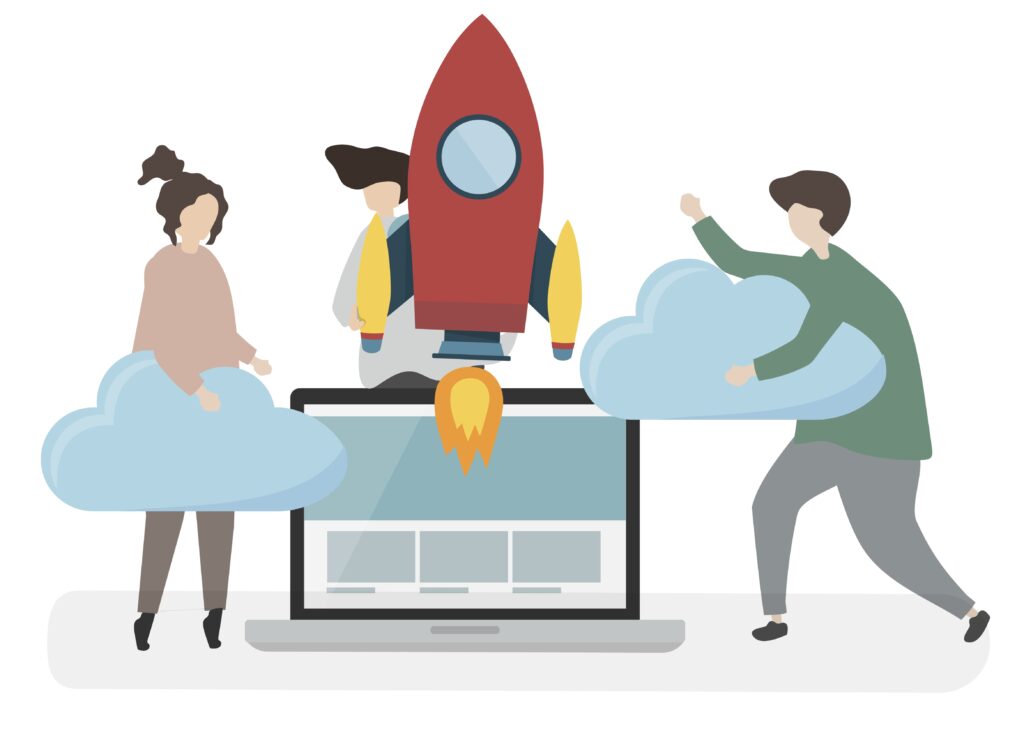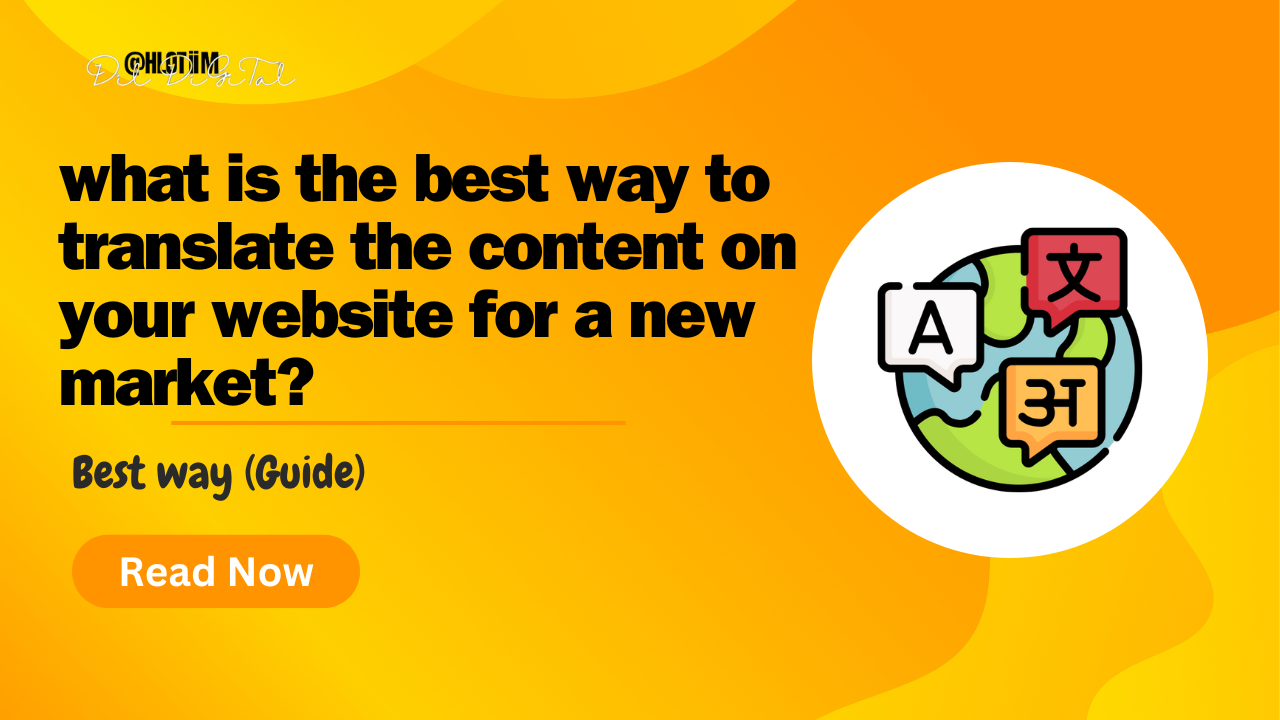Expanding into a new market is an exciting opportunity for any business, but it comes with one significant challenge—language. To truly connect with your audience and provide them with a seamless experience, translating your website is a must.
But how do you go about it? What is the best way to translate the content on your website for a new market? Simply swapping out words isn’t enough; you need a strategy that accounts for cultural nuances, SEO, and maintaining your brand voice.
In this article, we’ll explore what is the best way to translate the content on your website for a new market, ensuring that your business thrives on a global stage.
In this post, we cover...
ToggleWhat is the best way to translate the content on your website for a new market?
The best way to translate the content on your website for a new market is to use professional human translation combined with cultural localization. This ensures accuracy, maintains your brand voice, and adapts your content to resonate with the target audience while optimizing for multilingual SEO.
Why Translate Your Website for a New Market?
Expanding your website to cater to a new market is like opening the doors to an entirely new world of opportunities.
Think about it—when you translate your site, you’re not just changing words; you’re creating a bridge between your business and your potential customers.
Language is the first step toward building trust and showing that you value their culture.
The Benefits of Reaching a Global Audience
Translating your website can boost your business in ways you never imagined. You’ll see increased traffic, better engagement, and higher conversion rates.
A translated website also strengthens your brand presence globally, making it easier to compete with local players in new markets.
Common Challenges in Website Translation
Common challenges in website translation include navigating language barriers and cultural nuances, which can lead to miscommunication, and maintaining consistency in brand voice and messaging across different languages.

These challenges require careful planning and localization to ensure accuracy and engagement.
Language Barriers and Cultural Nuances
Language isn’t just about words; it’s about context, tone, and cultural norms. A phrase that works perfectly in one language might fall flat—or worse, offend—in another.
Maintaining Brand Voice and Message
Ensuring your brand voice remains consistent across different languages can be tricky. You need to make sure that the translated content still feels authentic and aligns with your brand’s identity.
Types of Website Translation Approaches
Website translation approaches include machine translation for speed, professional human translation for accuracy and localization, and hybrid methods that balance efficiency with quality.
Each approach has its pros and cons depending on your goals and budget.
Machine Translation
Machine translation tools like Google Translate are fast and inexpensive. But are they enough?
Pros and Cons of Machine Translation
While they save time and money, machine translations often lack accuracy and fail to capture cultural nuances. They’re great for quick drafts but not ideal for customer-facing content.
Professional Human Translation
Professional human translators bring a level of depth and understanding that machines can’t match.
Why It’s Considered the Gold Standard
Human translators ensure your content is not just translated but localized, keeping cultural and linguistic subtleties intact.
Hybrid Translation Methods
Combining machine and human translation can strike a balance between efficiency and quality.
Balancing Efficiency and Accuracy
Start with a machine translation for speed, then have a professional refine the content for accuracy and cultural relevance.
Key Steps for Translating Your Website Effectively
Key steps for translating your website effectively include researching your target audience, choosing the right translation tools or services, and optimizing for multilingual SEO.
Adapting visual content and thorough testing ensure a seamless user experience.
Researching Your Target Audience
Before diving into translation, you need to know your audience inside and out.
Understanding Local Language Preferences
What languages or dialects do your target customers speak? This step is crucial for connecting with them.
Studying Regional Cultural Norms
Cultural research helps avoid mistakes that could alienate your audience.
Choosing the Right Translation Tools and Services
Select tools and services that align with your budget and quality expectations. Popular options include SDL Trados, Smartling, and professional translation agencies.
Optimizing for Multilingual SEO
SEO isn’t just for one language; it’s a global game.
Keyword Research for Localized Search
Research region-specific keywords to ensure your site appears in local search results.
URL Structure and Hreflang Tags
Use hreflang tags to indicate the language and regional targeting of your pages. Structured URLs like example.com/es/ are user-friendly and boost SEO.
Adapting Visual and Multimedia Content
Adapting visual and multimedia content involves localizing images, videos, and graphics to resonate with the target audience and adjusting formats like date, time, and currency for regional standards.

This ensures a culturally relevant and user-friendly experience.
Localizing Images, Videos, and Graphics
Your visual content needs the same attention as your text. Localize images and videos to resonate with the target audience.
Adjusting for Different Formats and Standards
Formats like date, time, and currency vary across regions. Adjust them for a seamless user experience.
Testing and Quality Assurance
Testing and quality assurance involve proofreading translations for accuracy and conducting usability tests to ensure the website functions smoothly and appeals to the target audience.
This step guarantees a polished and effective user experience.
Ensuring Accuracy Through Proofreading
Always have a native speaker proofread the final content to ensure accuracy and naturalness.
Testing Usability for the Target Audience
Conduct usability tests to make sure the site functions well and appeals to your new audience.
Launching and Promoting Your Translated Website
Launching and promoting your translated website includes using localized marketing strategies like social media campaigns and email outreach while gathering user feedback post-launch.

This ensures successful engagement and continuous improvement in the new market.
Marketing Strategies for New Markets
Leverage localized marketing strategies like social media campaigns, influencer collaborations, and email marketing tailored to the region.
Gathering Feedback Post-Launch
Encourage users to provide feedback to fine-tune your website and offerings.
Best Practices for Ongoing Website Localization
Best practices for ongoing website localization include regularly updating translated content to stay current and monitoring market trends and user behavior.
This ensures your site remains relevant, competitive, and engaging for the target audience.
Regular Updates and Maintenance
Keep your translated content up-to-date with new trends and updates in your original site.
Monitoring Market Trends and User Behavior
Analyze user behavior and market trends regularly to adapt your website and stay competitive.
How can you localize your website effectively for a new audience?
Localization involves adapting content to reflect cultural nuances, language preferences, and user behavior. The best way to translate the content on your website is by combining human translation with localized design elements to make it resonate with the target audience.
If you’re targeting a specific region, it’s also crucial to focus on increasing your SEO traffic in 30 days to enhance visibility in that market.
What are the key factors to consider when translating website content?
Key factors include language accuracy, cultural sensitivity, maintaining brand voice, and optimizing for multilingual SEO. Understanding what is the best way to translate the content on your website for a new market ensures that your site resonates with global users.
Additionally, solving technical SEO issues with an SSL certificate can further improve your site’s performance post-translation.
Is professional translation better than machine translation for websites?
Professional translation ensures accuracy and cultural relevance, making it the best way to translate the content on your website. While machine translation is quicker, it often lacks the finesse needed for engaging global audiences.
To ensure readability and organization, you should also consider how many H2 tags to use per page in your translated content.
How does multilingual SEO impact your website’s global reach?
Multilingual SEO improves visibility in international markets by optimizing keywords, hreflang tags, and URL structures.
This is a critical step in what is the best way to translate the content on your website for a new market. Researching low-competition keywords with high traffic for your target market is an excellent way to enhance your multilingual strategy.
What tools can help find the best way to translate the content on your website?
Tools like WPML, Smartling, and Google Translate assist in website translation. However, combining these tools with human input provides the best way to translate the content on your website for accuracy and cultural fit.
Complement your translated pages by using the best methods to save images for websites to enhance user experience.
What steps should you follow to translate your website for international markets?
Steps include researching your audience, choosing a reliable translation method, optimizing for SEO, and localizing multimedia.
These ensure you’re implementing the best way to translate the content on your website effectively. A clear content strategy combined with multilingual keyword optimization is crucial for success.
How can cultural nuances affect website translation strategies?
Ignoring cultural nuances can lead to misinterpretation or offense. Tailoring your content to align with the local culture is essential for what is the best way to translate the content on your website for a new market. Addressing these nuances can improve engagement and trust with your audience.
What is the role of localization in website translation?
Localization adapts not just language but also visuals, currency, and measurements to fit the target audience, making it integral to the best way to translate the content on your website.
Localization helps your website feel native, enhancing the user experience significantly.
Which translation method is most effective for engaging new audiences?
A hybrid approach combining machine translation for efficiency and human translation for quality ensures the best way to translate the content on your website while engaging new markets effectively.
This balance saves time and ensures a culturally relevant final product.
How can businesses determine the best way to translate the content on their website?
Businesses should evaluate their audience’s needs, choose a reliable translation method, and focus on multilingual SEO.
This approach answers what is the best way to translate the content on your website for a new market comprehensively, ensuring your site reaches and resonates with global audiences.
Conclusion
Translating your website is a powerful way to grow your business and connect with new markets. The best way to translate the content on your website is to combine professional human translation with cultural localization, ensuring accuracy, consistency, and engagement.
Whether you’re asking, “What is the best way to translate the content on your website for a new market?”, the answer lies in adapting to your audience’s language, culture, and preferences while optimizing for multilingual SEO. Take the time to localize effectively, and you’ll set your business up for global success.
FAQs (Frequently asked questions)
What are the most common mistakes in website translation?
Failing to localize content, relying solely on machine translation, and ignoring cultural nuances are common mistakes.
How can I ensure my translated website ranks well on search engines?
Use localized keywords, optimize URLs, and implement hreflang tags for multilingual SEO.
Is it better to use machine translation or hire a professional?
While machine translation is faster, professional translators provide higher quality and localization accuracy.
How long does it take to translate a website for a new market?
The timeline depends on the size of your site and the complexity of the language, but a few weeks is typical.
What tools are best for managing multilingual websites?
Tools like SDL Trados, Smartling, and WPML for WordPress are excellent for managing translations efficiently.



